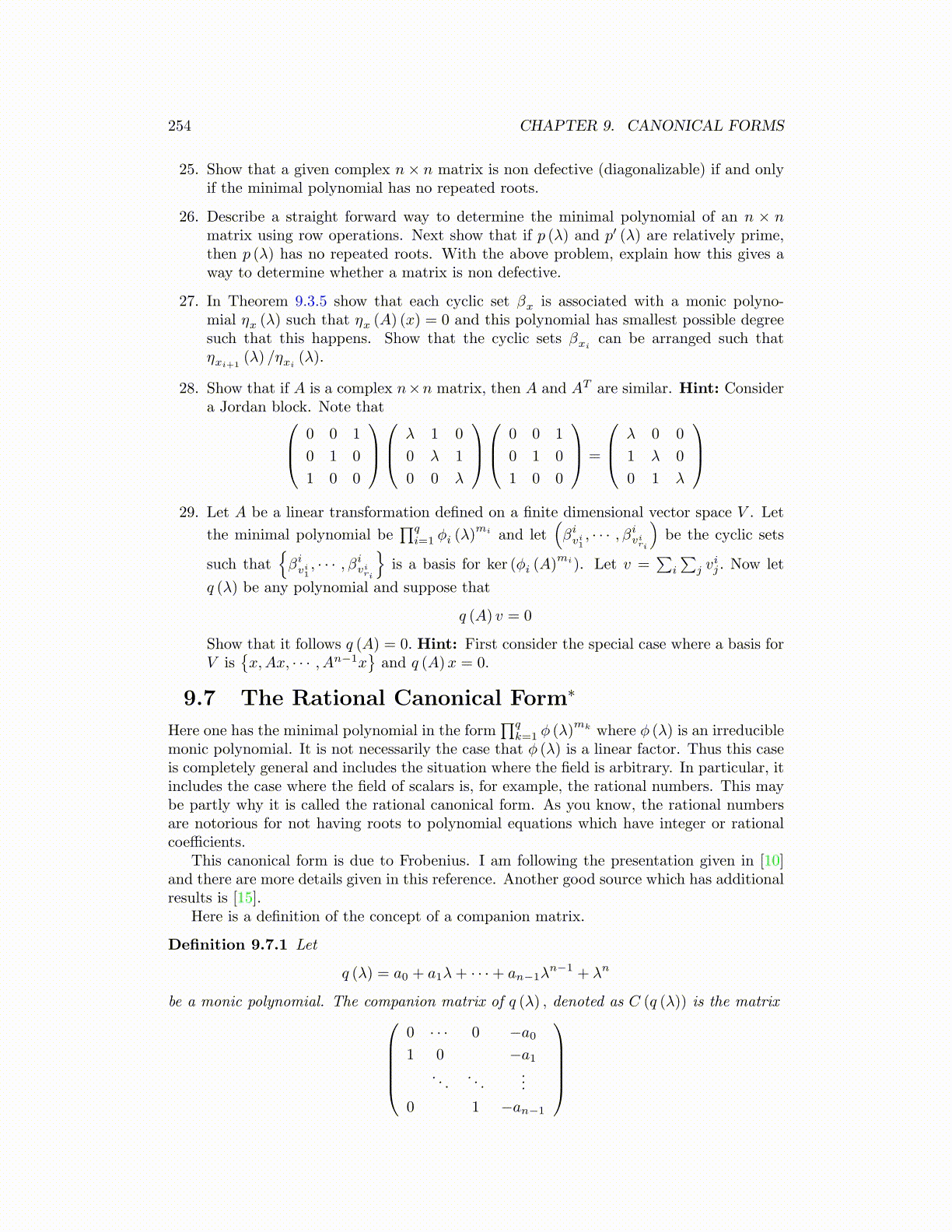
254 CHAPTER 9. CANONICAL FORMS
25. Show that a given complex n× n matrix is non defective (diagonalizable) if and onlyif the minimal polynomial has no repeated roots.
26. Describe a straight forward way to determine the minimal polynomial of an n × nmatrix using row operations. Next show that if p (λ) and p′ (λ) are relatively prime,then p (λ) has no repeated roots. With the above problem, explain how this gives away to determine whether a matrix is non defective.
27. In Theorem 9.3.5 show that each cyclic set βx is associated with a monic polyno-mial ηx (λ) such that ηx (A) (x) = 0 and this polynomial has smallest possible degreesuch that this happens. Show that the cyclic sets βxi
can be arranged such thatηxi+1
(λ) /ηxi(λ).
28. Show that if A is a complex n×n matrix, then A and AT are similar. Hint: Considera Jordan block. Note that 0 0 1
0 1 0
1 0 0
λ 1 0
0 λ 1
0 0 λ
0 0 1
0 1 0
1 0 0
=
λ 0 0
1 λ 0
0 1 λ
29. Let A be a linear transformation defined on a finite dimensional vector space V . Let
the minimal polynomial be∏q
i=1 ϕi (λ)mi and let
(βivi1, · · · , βi
viri
)be the cyclic sets
such that{βivi1, · · · , βi
viri
}is a basis for ker (ϕi (A)
mi). Let v =∑
i
∑j v
ij . Now let
q (λ) be any polynomial and suppose that
q (A) v = 0
Show that it follows q (A) = 0. Hint: First consider the special case where a basis forV is
{x,Ax, · · · , An−1x
}and q (A)x = 0.
9.7 The Rational Canonical Form∗
Here one has the minimal polynomial in the form∏q
k=1 ϕ (λ)mk where ϕ (λ) is an irreducible
monic polynomial. It is not necessarily the case that ϕ (λ) is a linear factor. Thus this caseis completely general and includes the situation where the field is arbitrary. In particular, itincludes the case where the field of scalars is, for example, the rational numbers. This maybe partly why it is called the rational canonical form. As you know, the rational numbersare notorious for not having roots to polynomial equations which have integer or rationalcoefficients.
This canonical form is due to Frobenius. I am following the presentation given in [10]and there are more details given in this reference. Another good source which has additionalresults is [15].
Here is a definition of the concept of a companion matrix.
Definition 9.7.1 Let
q (λ) = a0 + a1λ+ · · ·+ an−1λn−1 + λn
be a monic polynomial. The companion matrix of q (λ) , denoted as C (q (λ)) is the matrix0 · · · 0 −a01 0 −a1
. . .. . .
...
0 1 −an−1